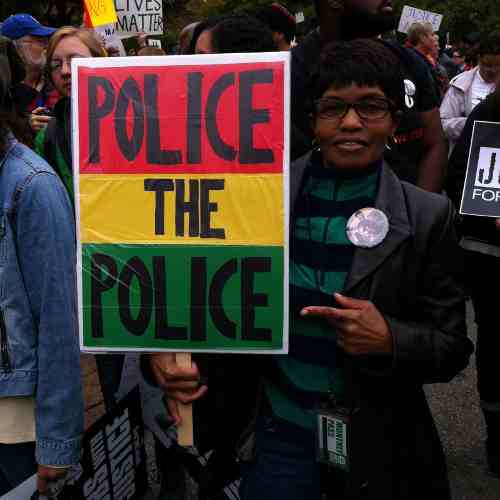Ferguson Shooting: Newseum to Display Items from the Case

Newseum announced Tuesday it has collected more than a dozen items from protesters and journalists in Ferguson, Mo., following the August 2014 fatal shooting of unarmed black teenager Michael Brown and the November 2014 grand jury decision not to indict Ferguson police officer Darren Wilson for the shooting.
Later this month, the museum will update its Bloomberg Internet, TV and Radio Gallery to include artifacts from reporters who covered the protests from August to November, including rubber pellets from a stun grenade that police used to disperse protesters.
The items that will go on display include a press pass and two rubber pellet balls donated by Stephanie Lecci, a newscast producer for St. Louis Public Radio.
Lecci was reporting from Ferguson the night of Aug. 17, 2014, when police broke up the crowds using tear gas and hornet’s nest stun grenades, which propel rubber pellets when ignited.
Her colleague at the station, Nancy Fowler, donated her notebook, which contains rushed notes and the phrases “31 arrests” and “reports of gunfire.”
Shortly before the Nov. 24, 2014, grand jury decision, Newseum online managing editor and St. Louis native Sharon Shahid traveled to Ferguson to collect items for the museum.
While in Ferguson, Shahid spoke with reporters about their experiences, including St. Louis Post-Dispatch staff photographer David Carson, who captured images of protests in the days after Brown was killed.
Carson donated a reporter’s notebook he used during interviews with protesters and the clothing he wore the night of the most intense rioting, when demonstrators shoved him to the ground.
After the grand jury decision in November, the Newseum created a feedback wall asking visitors to vote “Yes” or “No” on whether they think news coverage of the events in Ferguson has been fair and accurate.
In the first week, the majority of visitors replied “No.” Visitors also are invited to leave their comments about the news media’s Ferguson coverage.
“One of our roles at the Newseum is to help people understand and appreciate First Amendment freedoms,” said Peter Prichard, chairman and CEO of the Newseum.
“The continuing debate about Ferguson gives us an opportunity to show why two of those freedoms — the rights to assemble peaceably and to petition the government for a redress of grievances — are so important, even though we often take them for granted.”
Other items Shahid acquired for the Newseum collection include a homemade “Police the Police” poster, a T-shirt that reads “Hands Up, Don’t Shoot” and three African American weekly newspapers that feature front-page coverage of the protests.
The Newseum is a public charity funded by individuals, corporations, and foundations. One of the top attractions in Washington, D.C., the Newseum’s 250,000-square-foot news museum offers visitors an experience that blends news history with new technology and hands-on exhibits.





